- Home
- slideshows
- miscellaneous
- Here's what it's like to ride Medellin's famous cable car system, which helped transform the Colombian city from the world's most dangerous into a thriving tourist hub
Here's what it's like to ride Medellin's famous cable car system, which helped transform the Colombian city from the world's most dangerous into a thriving tourist hub
Medellín's first cable car line opened in 2004, and was intended to connect parts of the city that had been isolated for decades. Pablo Alvarez Correa, a tour guide from the city, described them to Business Insider as "an innovative solution to the problems of geographic and economic exclusion."

The city was just coming out of a period of being known as the most dangerous city in the world, and the cable cars are credited with helping to transform the city.
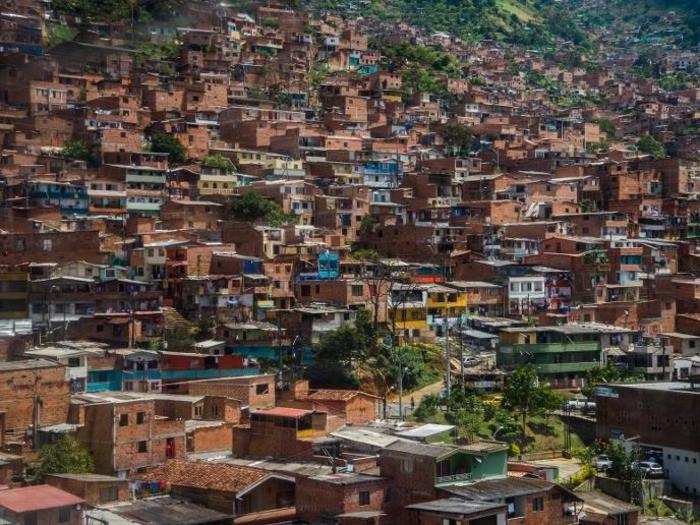
There are now four separate lines, connecting the city's neighborhoods that sprawl up its mountains, and allowing people who were once isolated to easily travel into the center of the city.
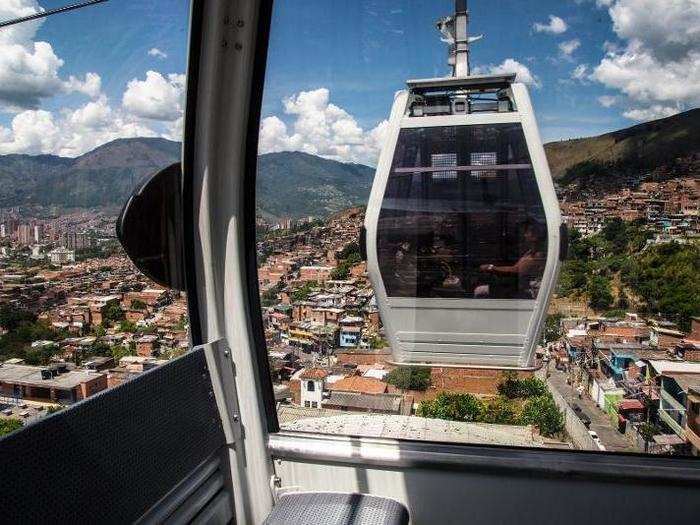
Two more lines are also under construction.
Many of the city's two million people live on its steep hills, but the center, and the city's metro, are in the valley below. Before the cable cars, people would have to take two buses to get down the mountains — meaning many did not do so, and missed opportunities for work, education, and health.
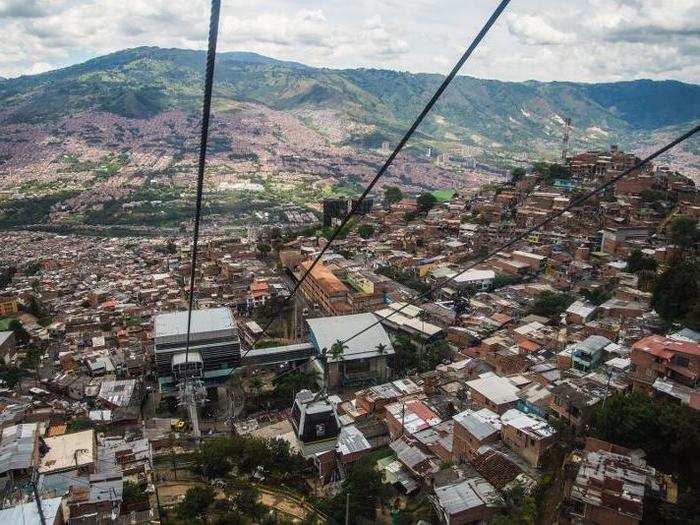
Alvarez Correa told Business Insider that the cable cars act as "a symbol of resurrection or a symbol of hope" for the city.
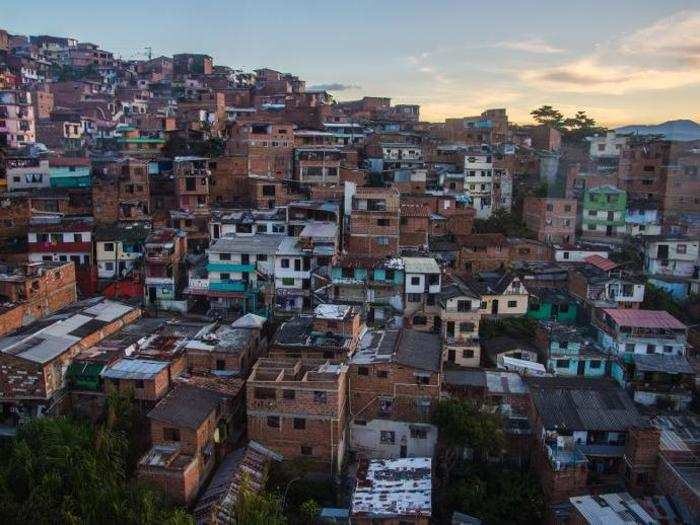
Alvarez Correa, who offers walking tours of Medellín, his home city, through the local company Real City Tours, told said the introduction of the cable cars was "absolutely amazing because they connected the neighborhoods up in the mountains, and these were historically the most excluded."
The city was once best known as the base of drug lord Pablo Escobar. But its narrative is changing, and it has been recognized as one of the world's most innovative cities for its rapid change and bold public projects.
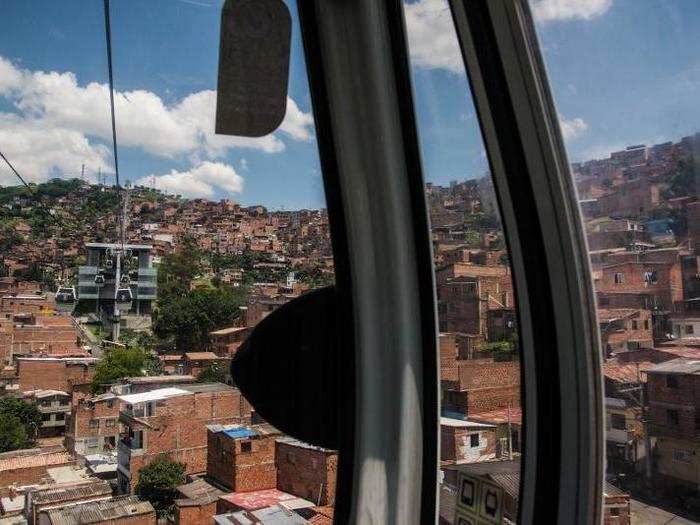
Medellín's mayor said when the city won the award in 2012 that it was "a reason for joy on the part of every one of the 2.5 million inhabitants of our city."
The cable cars connect to areas that were once considered "no-go" neighborhoods like Santo Domingo, which was once one of the city's most dangerous.
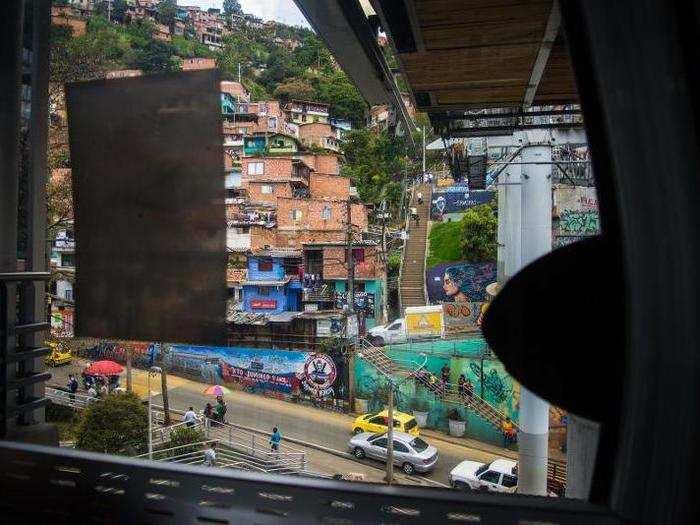
Now everyone can ride to the top and explore, something people from the city, from elsewhere in Colombia, and from abroad can be spotted doing. This is the neighborhood of Santo Domingo, at the top of Line K.
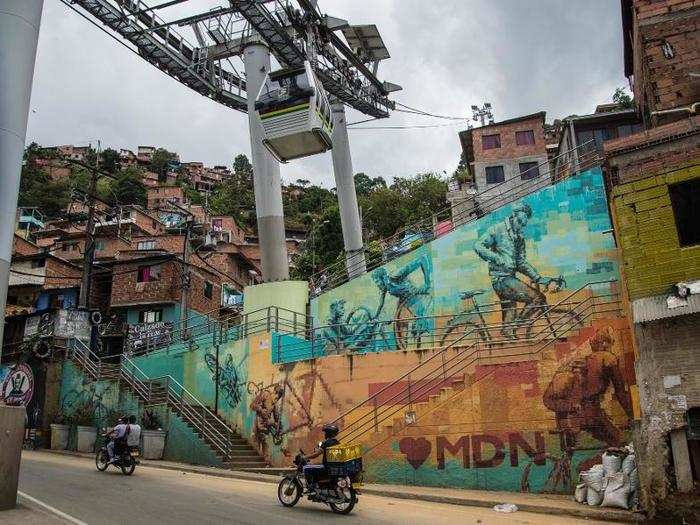
The ride provides striking views of the city.
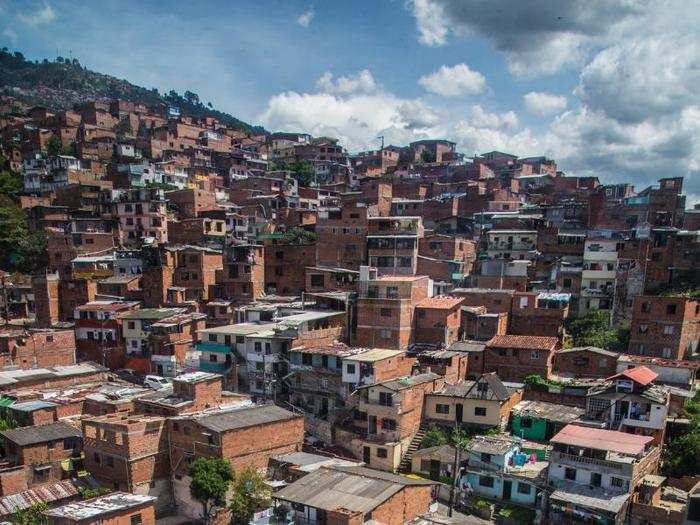
And easy access to the bustling neighborhoods at the top.
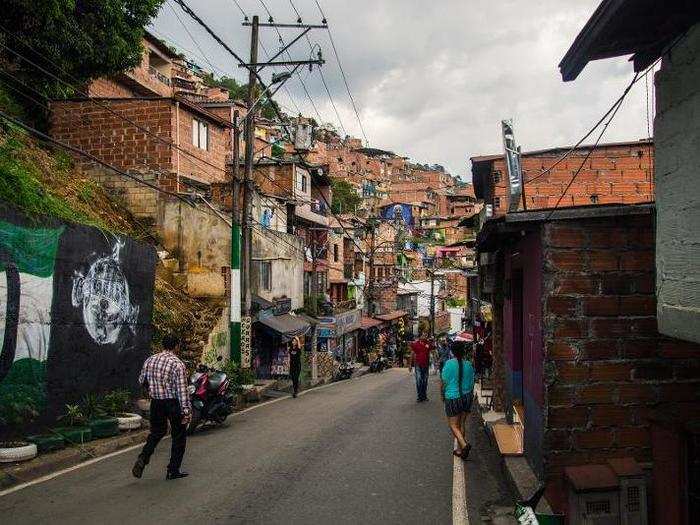
Buses also come to these areas, but trying get down to the rest of the city this way takes much longer. This is what people relied on before the cable cars were introduced, and Alvarez Correa, said people now "have to spend significantly less time travelling."
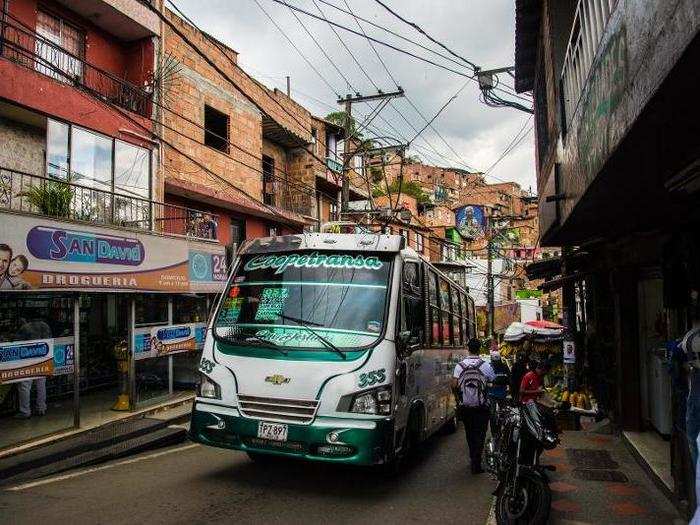
Taking the cable cars costs around $0.80, and you only have to pay when you enter the system. This means you could get on the metro at the south of the city, ride it until the cable car line in the north, take the cable car up and down, and take the metro back, all for one fare — as long as you don't leave a station.
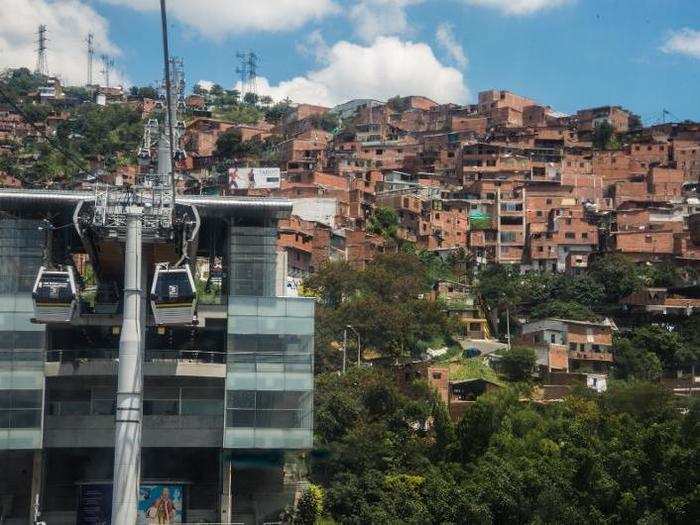
You pay for a ticket at a booth, and then drop it into a slot that lets you through the turnstiles.
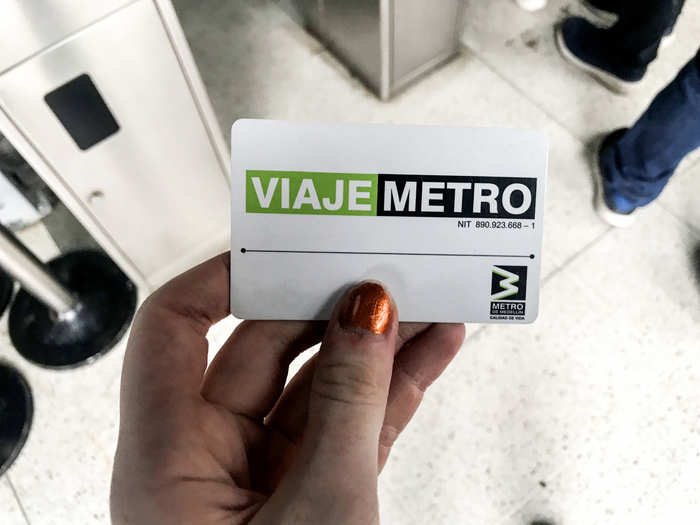
You can also buy a permanent card that you can top up, which offers slightly cheaper fares and is popular with locals. But signing up requires things like ID, and isn't necessarily worth it if you're only in the city for a few days.
You can see the cable cars rising up the mountain from the metro stations.
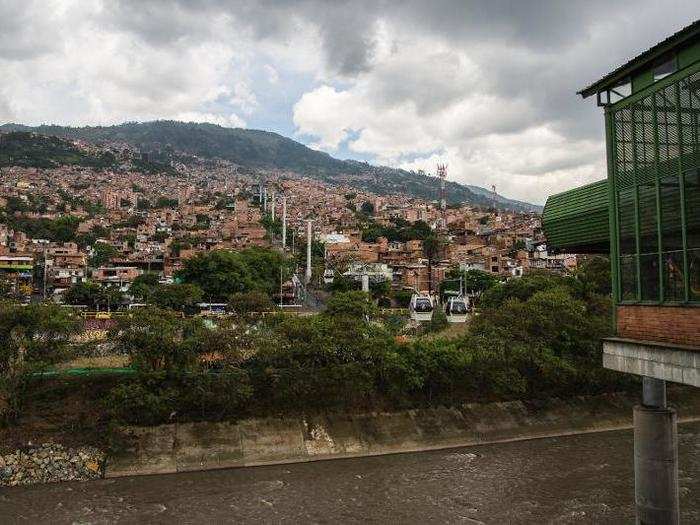
Depending on the time of day, all of the seats can be full, or you can be the only person each carriage.
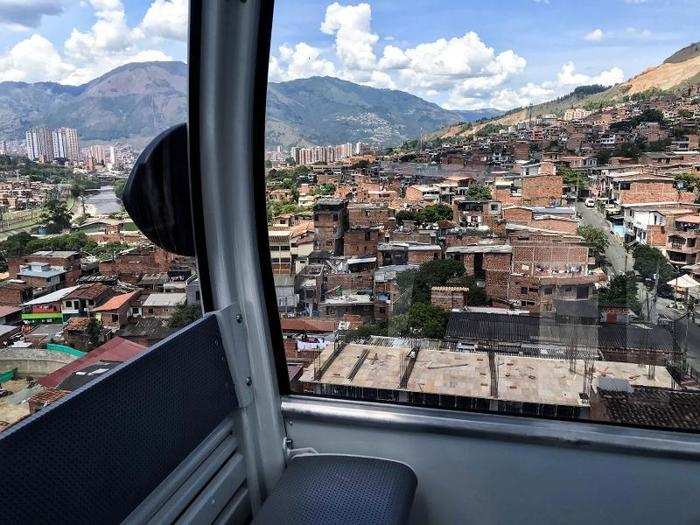
The system has clear alerts and some are even in English, like this sign asking people not to eat and drink on board.
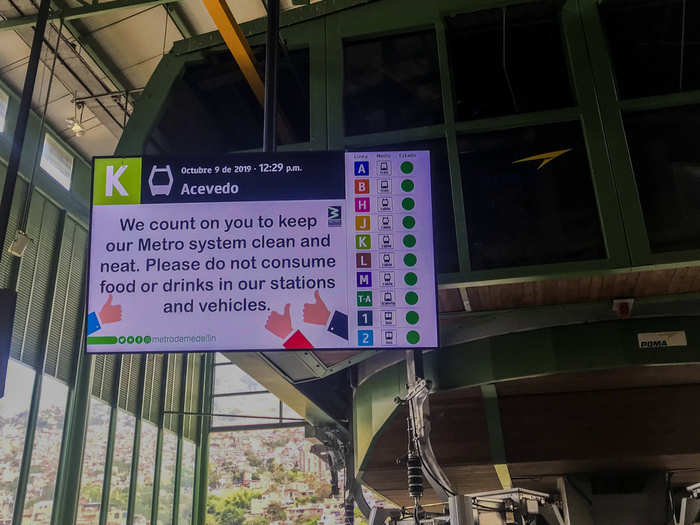
Each line makes multiple stops, and you can sit in the carriage as it goes through the stations that you don't want to get off at. Each station is bright with lots of glass, and has maps that clearly lay out the city's transport systems.
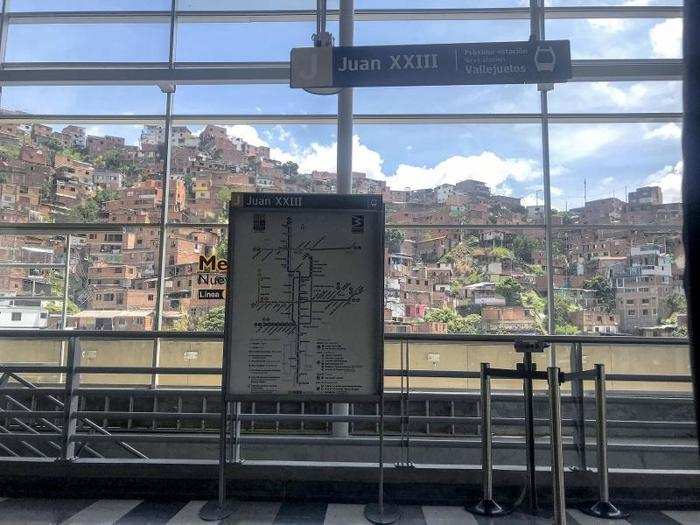
The journey is also quick — it only takes around five minutes to ride three stops up the mountain to Santo Domingo.
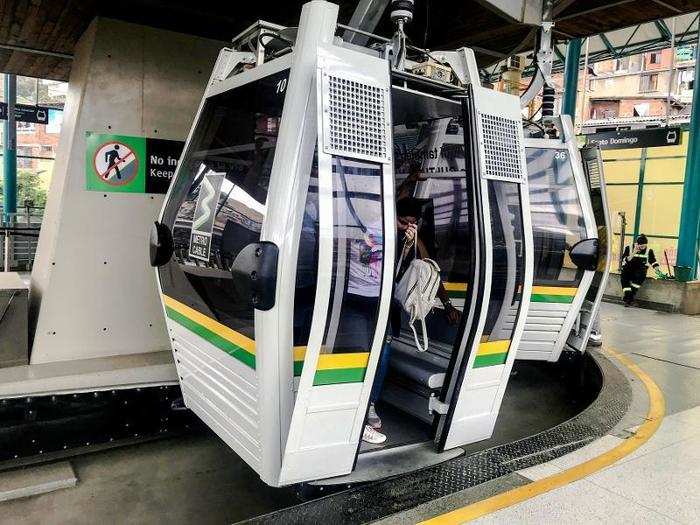
Riding up the mountains, you can see art on rooftops and amenities like public sports pitches.
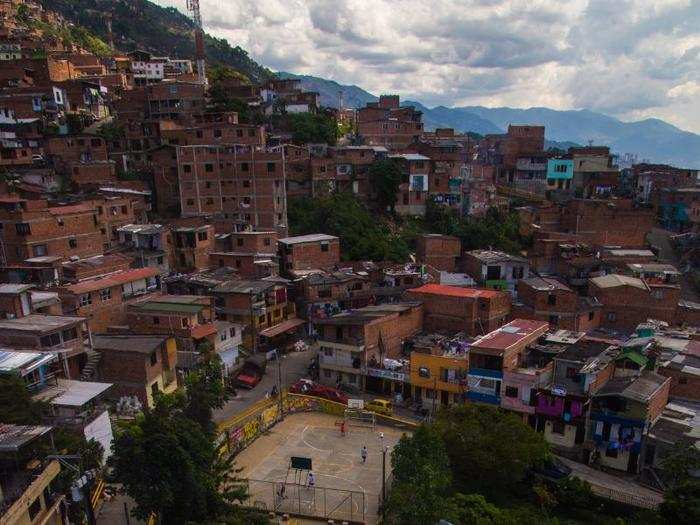
And the ride gets you close to the city's art.
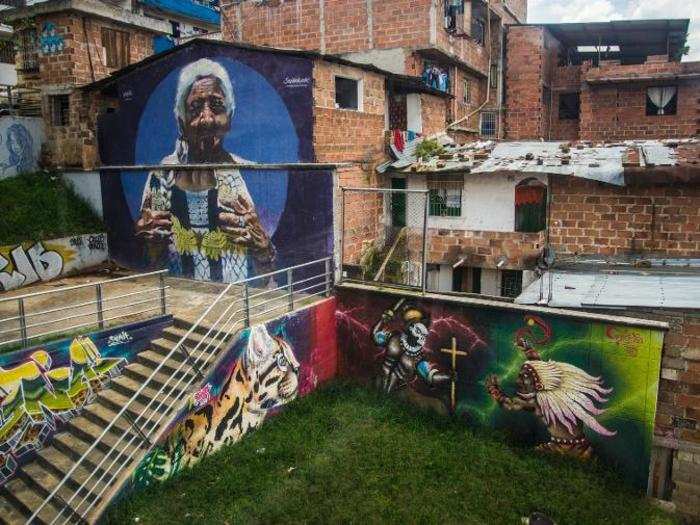
Some of this art also shows how integral the cable cars are to the community, like this mural in Santo Domingo.
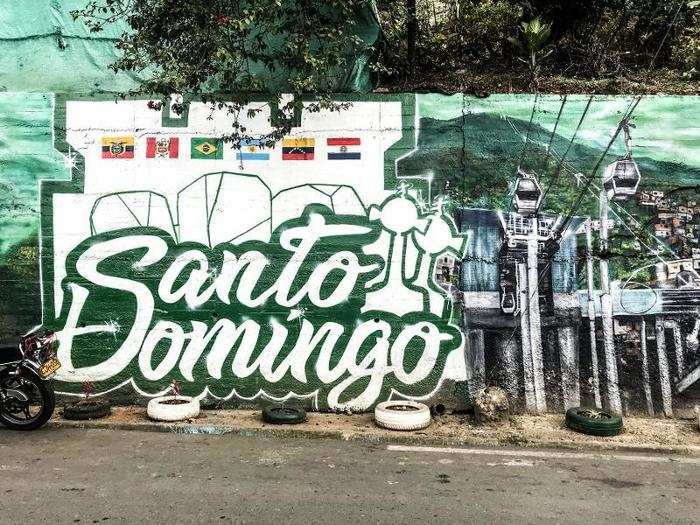
Access to the metro stations comes through walkways that allow people to cross over the Medellín River.
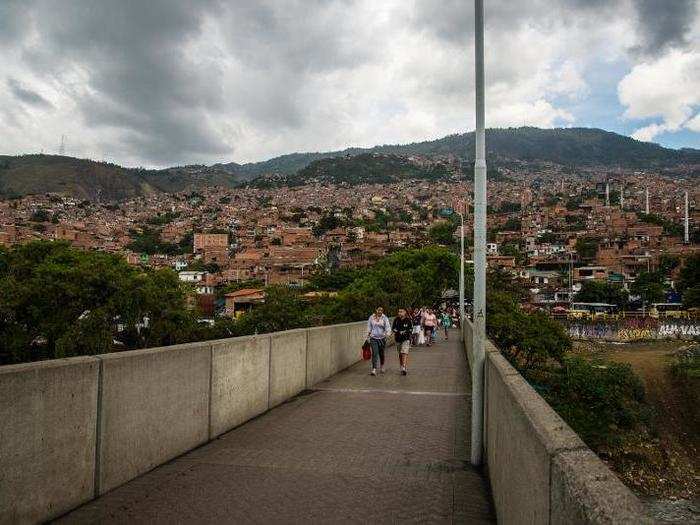
Alvarez Correa said the success of the cable cars can be seen by how popular they are: "When you go to the metro stations that also have the cable cars at rush hour, they are absolutely packed. They are full. I think that indicates that it works."
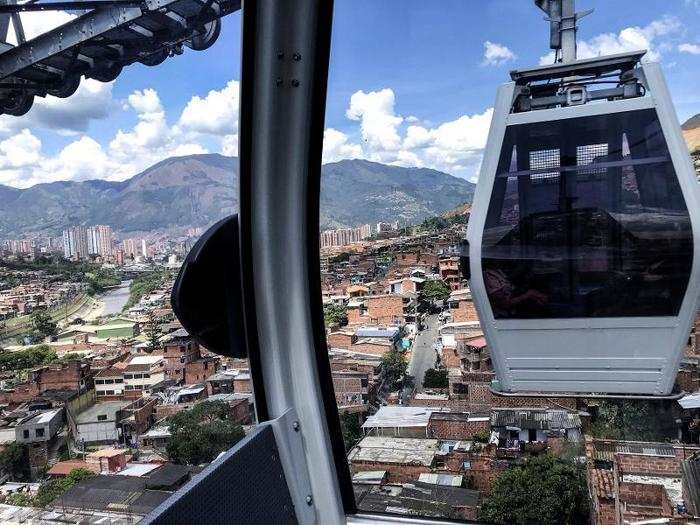
Since Medellín introduced its cable cars, cities like Brazil's Rio de Janeiro and Bolivia's La Paz have followed suit — although its success hasn't always been replicated.
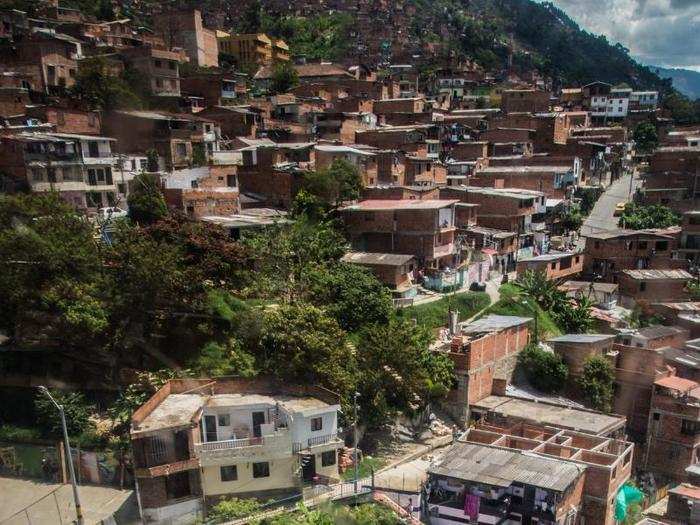
Alvarez Correa said: "We didn't invent the cable car, but they were not used before as public transportation systems."
But while they are credited with helping to transform Medellín, in some cities, like Rio, the cable cars have been credited with making poverty worse.
They have even become something of a tourist attraction, and are regularly listed as a must-do in the city. Alvarez Correa said that locals don't find that bizarre because "we understand its novelty."

Popular Right Now
Popular Keywords
Advertisement